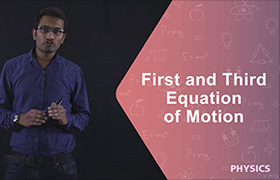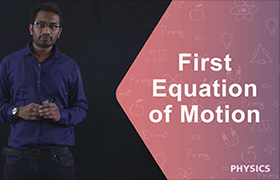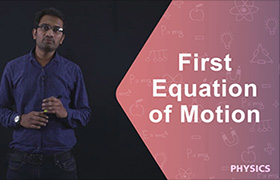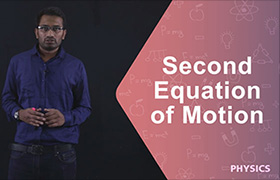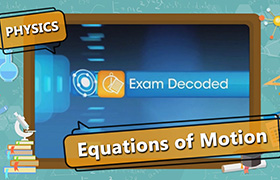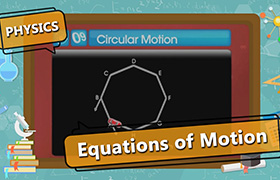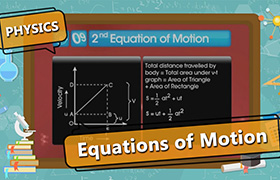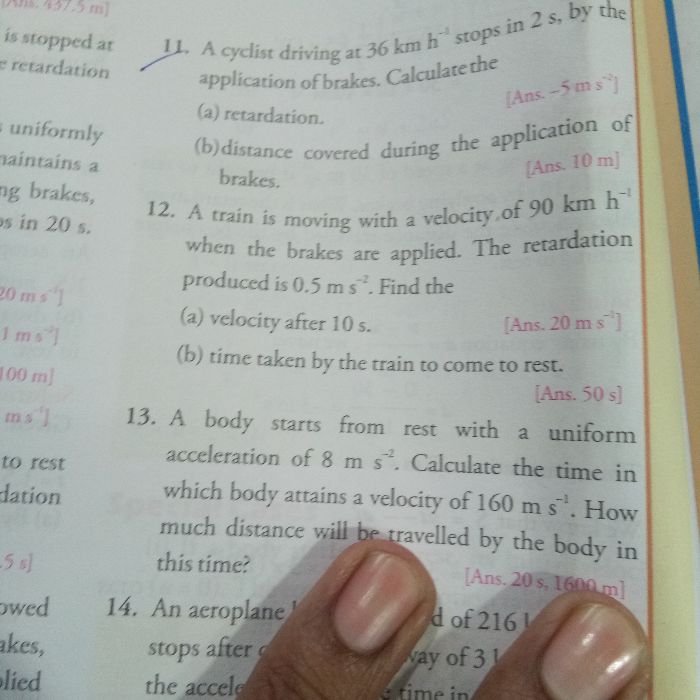ICSE Class 9 Answered
when brakes are applied to a bus, the retardation produced is 25 cm s^-2 and the bus takes 20 second to stop calculate the initial velocity of the bus and the distance travelled by bus during this time
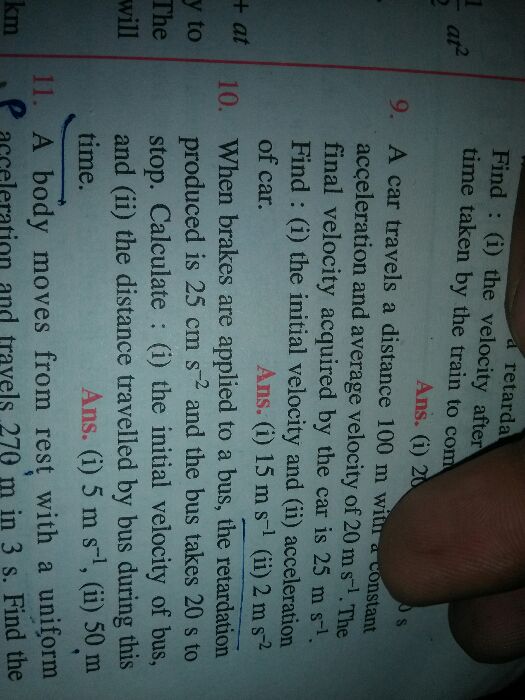
Asked by aniketkush981 | 20 Sep, 2020, 15:36: PM
a = 25 cm/s2
v = 0
t = 20 s
v = u + at
0 = u + (-25) x (20)
u = 500 cm/s
Initial velocity, u = 500 cm/s
s = ut + (1/2) at2
s = (500) (20) + (1/2) (-25) (20)2
s = 10000 + (-5000)
s = 5000 cm = 50 metres
Distance travelled by bus after applying brakes is 50 metres.
Answered by Shiwani Sawant | 21 Sep, 2020, 12:38: PM
Application Videos
Concept Videos
ICSE 9 - Physics
Asked by 2016159 | 26 Jun, 2024, 19:13: PM
ICSE 9 - Physics
Asked by mymunathabasum1 | 24 Apr, 2023, 18:06: PM
ICSE 9 - Physics
Asked by sahuprabhat325 | 14 Dec, 2022, 08:39: AM
ICSE 9 - Physics
Asked by Ramprasadramoji | 05 Sep, 2022, 18:44: PM
ICSE 9 - Physics
Asked by savitamahajan202 | 09 Jul, 2022, 12:47: PM
ICSE 9 - Physics
Asked by 2014.476bavyashree | 23 Jun, 2022, 18:00: PM
ICSE 9 - Physics
Asked by abhaymukherjee789 | 28 May, 2022, 11:06: AM
ICSE 9 - Physics
Asked by biswasdolly84 | 26 May, 2022, 21:55: PM
ICSE 9 - Physics
Asked by dibsparna | 03 Nov, 2021, 13:54: PM
ICSE 9 - Physics
Asked by kartikbhartiya613 | 28 May, 2021, 14:36: PM

